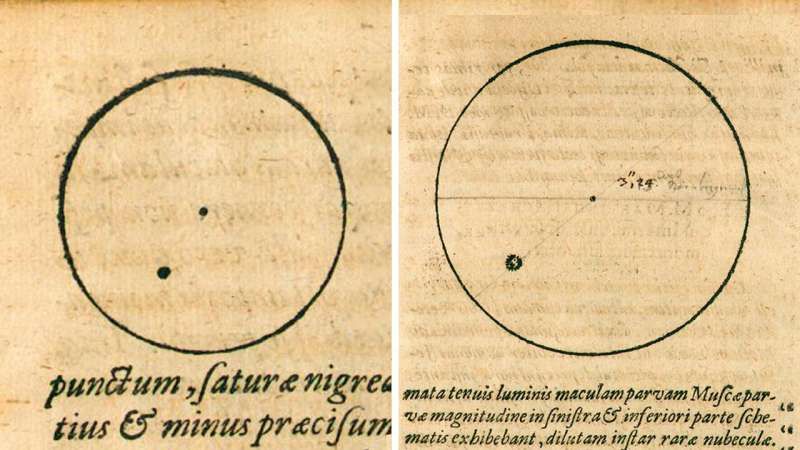“Half-forgotten” sunspot drawings by Renaissance astronomer Johannes Kepler are showing us more about how the sun’s cycle of activities work.
Kepler (1571-1630), who was born in what we now call Germany, is best known in astronomy for formulating the laws of planetary motion. His diverse interests, however, included looking at the sun. Drawings he made of a sunspot group in 1607, a new study reveals, show the “tail-end of the solar cycle” with instrumentation before the telescope was more widely available in the early 17th century.
“The group’s findings … offer a key to resolving the controversy on the duration of solar cycles at the beginning of the 17th century,” Japan’s Nagoya University wrote in a statement.
Known as the Maunder Minimum, this period (between 1645 and 1715) was said to be an era of fewer sunspots than usual, which in turn led to colder periods on Earth than the norm of the day.
Related: Solar maximum will arrive sooner and last longer than previously expected, say scientists
Since Kepler lacked the telescope, he instead examined the sun using camera obscura. That method used a “small hole in a wall to project the sun’s image onto a sheet of paper,” the statement noted. Kepler at first thought he was witnessing a transit of Mercury across the sun, but later clarified it was a sunspot group.
“This is the oldest sunspot sketch ever made with an instrumental observation and a projection,” lead author Hisashi Hayakawa, an assistant professor and solar scientist at Nagoya, said in a statement. He added the significance of Kepler’s solar drawings was overlooked, over the eras: “It has only been discussed in the context of the history of science and had not been used for quantitative analyses for the solar cycles.”
Related: Who invented the telescope?
Key to the researchers’ analysis was tracking how sunspots move across a solar cycle: “Their occurrence, frequency, and latitudinal distributions appear in cycles that affect solar radiation and space weather,” the statement noted. As such, they worked to narrow down what latitude Kepler’s sunspots were observed at.

The researchers say their analysis of Kepler’s drawings revealed four major things.
First, the sunspot group was at a lower latitude than previously believed (after taking into account the solar position angle from his location); related to that, future findings in the telescope showed sunspots at higher latitudes, suggesting “a typical transition” between cycles.
The latitude change suggests the sunspot group was at the end of one solar cycle instead of the beginning of another, based on the latitude of the sunspots, which formulated the third finding.
Finally, Kepler’s observations may show the transition zone between solar cycles, which the study pegged between 1607 and 1610.
While some researchers previously theorized the Maunder Minimum arose from irregular solar cycles different than the typical 11 years, Kepler’s records showed “a regular duration” for the solar cycle he observed in 1607, the study added.
But the finding is not without controversy: tree ring cycles from previous studies have suggested normal solar cycles in some work, and abnormal solar cycles in others.
Hayakawa urged further examinations on the matter. “It is extremely important to check these [tree rings] reconstructions with independent – preferably observational – records,” he said.
The new study was published in The Astrophysical Journal on July 25.












/https://tf-cmsv2-smithsonianmag-media.s3.amazonaws.com/filer_public/d1/82/d18228f6-d319-4525-bb18-78b829f0791f/mammalevolution_web.jpg)







Discussion about this post